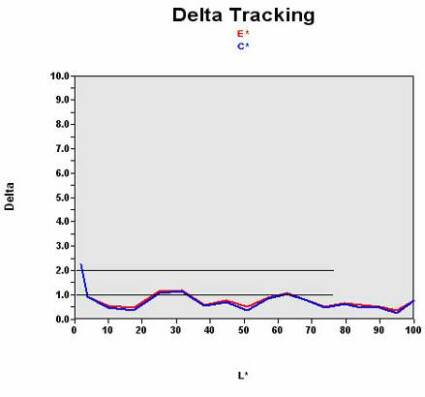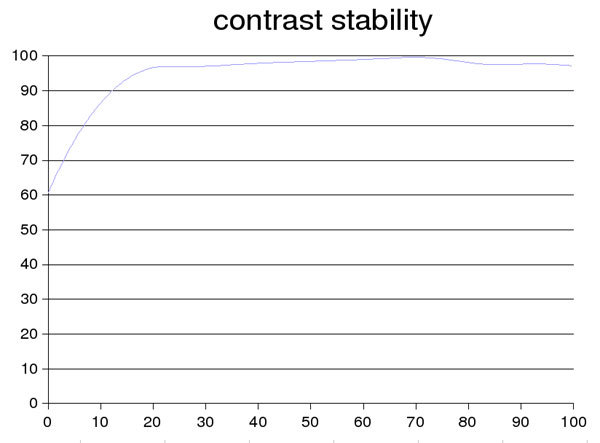BenQ's FP71e+ LCD Is Fast, But How Furious?
Honorable Color Rendering
The monitor's color rendering is honorable, but no more. Calibration reveals that 96% of the colors have a DeltaE of below 2 (which is equivalent to faithful color rendering and successful calibration according to LaCie). But this result has to be tempered by the fact that only 78% of the colors show a DeltaE of less than 1 (perfect color rendering), which is not as good a performance as the XP17 from Shuttle, for example. The FP71E has trouble displaying dark colors, but that's the norm for a TFT monitor - it's not exceptional.
Contrast And Luminance
After calibration, we obtain the following values for contrast and luminance.
| White spot | Black spot | Contrast |
|---|---|---|
| 195 | 0.43 | 453.5 |
The value for black, a little high, confirms the difficulty the monitor had in rendering the darkest colors. The luminance is very high following calibration. Using our second sensor, we measured the stability of the contrast as a function of brightness. On the X-axis you see the brightness adjustment and on the Y-axis the contrast. Contrast is expressed here as a percentage of the maximum contrast value measured using the ANSI standard method. The maximum contrast was obtained at a brightness adjustment of 70%.
It was a pleasant surprise that contrast was stable over 80% of the range of brightness adjustment. This is fairly important since the calibration of our monitor was done at approximately 65% brightness, which produced a very high white value of 195 cd/m². But under certain use conditions, too high a brightness is not desirable - when watching a movie in the dark, for example. So you can lower the brightness of your FP71E+ up to a value of 20% in the OSD without losing too much contrast.
Get Tom's Hardware's best news and in-depth reviews, straight to your inbox.
Current page: Honorable Color Rendering
Prev Page Latency: Hey! Where's My 8ms? Next Page And Beyond
